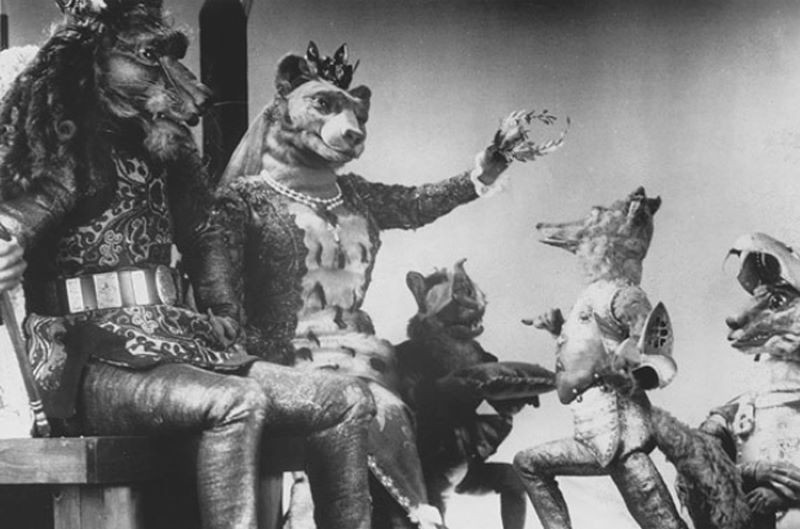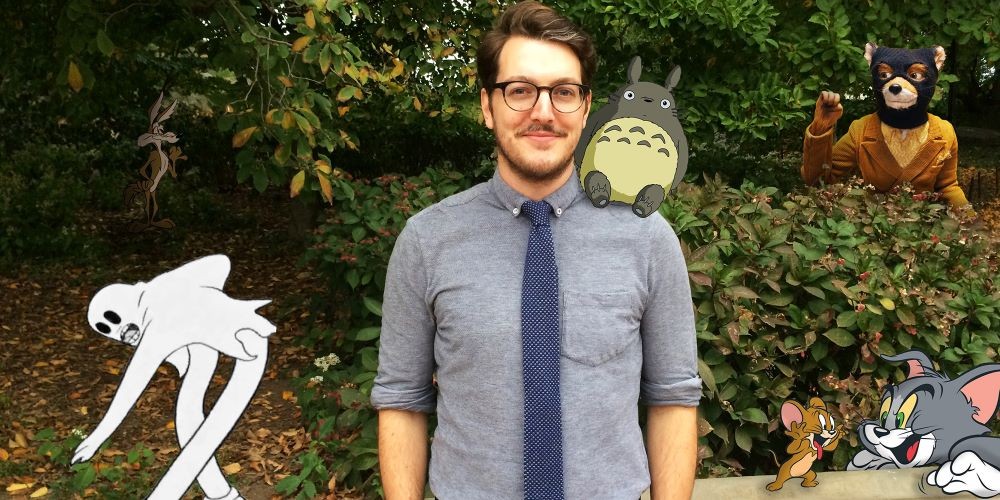Columbia in the Summer: An Interview with Summer Faculty Vito Adriaensens
Visiting scholar and Adjunct Assistant Professor Vito Adriaensens is teaching the summer course, History of Animated Films. This class will explore the evolution of animated films, the myriad styles, techniques, and media present within this art form, as well as the cultural specifics and histories of animated films created in the U.S., Japan, Europe, and the U.S.S.R.
Professor Adriaensens received his PhD in Theatre Studies and Intermediality from the University of Antwerp, and was awarded a Marie Skłodowska-Curie Postdoctoral Fellowship from the European Union’s Horizon 2020 Project and the Research Foundation Flanders (FWO) through the University of Antwerp’s Research Centre for Visual Poetics. His research “focuses on the aesthetic, cultural and (art) historical interaction between film, theatre and visual arts, with an emphasis on early cinema.” In 2017, he co-authored the book, Screening Statues: Sculpture and Cinema (Edinburgh University Press, 2018). We interviewed him to learn more about his course.

Why is it important for artists to think about the history of animation?
Because animation eclectically dips into the inky wells of art history, accurately mirroring popular art movements of the twentieth and twenty-first century.
What inspired you to teach this course?
I am somewhat of a specialist on early cinema, and looking at the birth of the medium there is one thing that you need to understand: without animation there is no cinema. In the most literal sense, cinema exists through the animation of 16 to 24 still frames each second; in the historical sense, hand drawn flipbooks, painted lantern slides, and even projected animated films on reels of paper preceded the first photographic shows by pioneers such as the Lumière brothers. Animation has always been a part of film history, and the particular flexibility, imagination, and unrivaled possibilities that the medium allow have fascinated me ever since I saw Jan Svankmajer’s Neco z Alenky (Alice; 1988) as a kid. I have been an avid consumer of animation since and worked as an animation film critic for a while. My goal is now to share my passion and transfer it to young minds, so they can convince others it is an art form in and of itself.
What makes animation a unique medium compared to, for instance, live action films? What can animated films offer that live-action films can’t?
It has the power to transport you to worlds that you can inhabit instantly without the suspension of disbelief being forced upon you, you accept it as a given in animation. The only reason that fantasy films and comic book adaptations are so successful today is that they are made up almost entirely of successful animation techniques (CGI or other) to make people buy into them. The same goes for abstract expressions of emotion, stylistic experiments, and the meta-contemplation of cinema - where have you ever seen that more successfully achieved than in Chuck Jones’s 1953 Duck Amuck? As Daffy Duck put it, “Buster, it may come as a complete surprise to you, to find that this is an animated cartoon.”
What are some of your favorite animated films and why?
Three of my favorite students will also see in my class, in chronological order:

Le Roman de Renard (The Story of the Fox; Wladyslaw and Irene Starewicz, 1930)
The first feature film by the unrivaled pioneer of stop motion puppetry, Wladyslaw Starewicz, who began animating animals as early as 1912. This first Fantastic Mr. Fox is actually an adaptation of wonderful French-Dutch medieval satires. The film doesn't just feature breathtaking animation of lionhearted kings and cunning foxes, it also boasts stunning cinematography of snow dappled landscapes by moonlight.

The Lord of the Rings (Ralph Bakshi, 1978)
Fans of the Peter Jackson films know that it would not be possible to adapt Tolkien without an arsenal of animation techniques. Perhaps known better for bringing animation into the realm of X-ratings in the 1970s with Fritz the Cat (1972), Ralph Bakshi was an innovative director who dared to experiment, pulling out all of the stops for The Lord of the Rings. The result, I dare say, is a film that brings a lot more imagination to bear on Tolkien’s vision.

Hoshi no koe (Voices of a Distant Star; Makoto Shinkai, 2003)
Makoto Shinkai is the torchbearer of Japanese animation. Shinkai’s recent Kimi no na wa (Your Name; 2016) was the highest grossing anime of all time, but it is the artistry of his films that is of note. He made Hoshi no koe all by himself on an Apple Power Mac G4, showcasing his unique talents in fusing 2D with 3D/CG animation with some lens flare thrown in for good measure – all for a story about teens texting in space. Yes, his films are incredibly schmaltzy, but have a heart already.
How will you encourage students to reflect on the differences and similarities in animated films from different cultures and countries who have their own artistic sensibilities (for instance, Japanese vs. American vs. French animated films)?
As with all film history, you cannot ignore the word “history,” and in my opinion that means both in terms of historical events that formed countries and cultures, as well as in terms of its art history. Japanese films were not the same after the bombs dropped on Hiroshima and Nagasaki, and nowhere is this more apparent than in its rich field of animation: Astro Boy, Mobile Suit Gundam, Akira, Ghost in the Shell, Neon Genesis Evangelion, even most of the Studio Ghibli films deal with the cultural fallout of WWII. Art historically, the cross-pollination that starts when Japanese animated films become popular, first in France and then in the U.S., is an enormously complicated and interesting process that we will dig into, from Johnny Cypher in Dimension Zero to Teen Titans.
What questions will you pose to students to think about these differences or similarities between cultures?
Following the rule of three:
How did Disney’s Silly Symphonies and Warner Bros. Looney Tunes first act as cultural ambassadors to the U.S., and how are Mickey Mouse and Bugs Bunny perceived abroad today as opposed to the 1940s?
What was the importance of René Laloux’s 1973 Palme d’Or nomination at the Cannes film festival for La planète sauvage (Fantastic Planet) and how did this film embody the spirit and culture of the 1970s?
Why and how did Pokémon manage to break down cultural barriers between Japan and other nations in the 1990s and early 2000s and how is Pokémon both very Japanese and not Japanese at all?
What do you hope students will gain by taking your course?
A better understanding of the world, of history, and of film. And if that is too lofty, I hope they will at least be able to remember Jan Svankmajer and the Quay Brothers in case they need to show off at cinephile cocktail parties.
